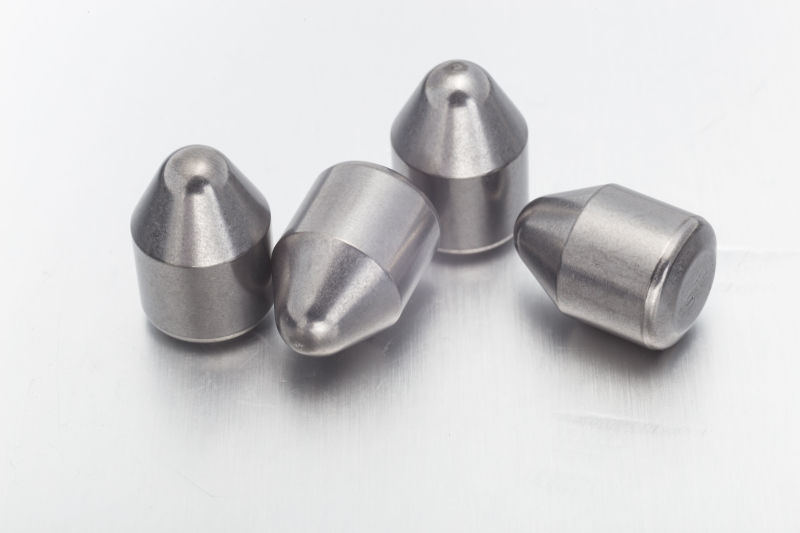29
2025
-
07
Tungsten karbide poroşoklarynyň ýokarlanmagy

Tungsten karbide tozan bahasy, isleg bilen üpjün etmek, harby talaplar, daşky gurşaw önümçiligi çäklendirmesini we daşky gurşaw önümçiligi çäklendirmeleri ýaly köp faktorlar arkaly syn edildi. Bu nodaça-sidiriş işleri üçin çuňluga täsirleri, ýylyň bahalary ýokarlanylýan bahadan soň bahasy birnäçe gezek bahadan 9,2% (~ 30% ýokarlanylyşy). - Tgenten konsentrasiýasynyň berk üpjünçiligi: Esasy önümçilik bölümlerinde daşky önümçilik çäklendirmeleri sebäpli ulanylmagy 35% -e ýetdi, ýöne işlemezligi bary-ýogy 15 gün dowam edip gelýär. Käbir üpjün edijiler daşarky ýerler bilen ýüzbe-ýüz bolýar. - Europeewropadaky göçürilen ýerlikleri: ölçeg ton tarapyndan (~ 292,000-3085 dollar), içerki bahalardan 460-485 dollar), içerki bahalardan ýokary we global üpjünçilik ýetmezçiligi. 2. Şarlyk derejesini ýokarlandyrmak: Harby, gün gününe weadyş söweşleri hökmünde Harby talaplar 2026-njy ýyllara çenli käbir kompaniýalaryň şertleri bar: bu toparlaryň önümleri kesilen käbir önümleri, kompaniýalaryň her gr ýetmegi bolsa, kompaniýalar şaý-seplerini şaýük edýär. Tehnologiki täzelenmeleri çaltlaşdyrmak üçin Longi we Tongweý. - Oplangabyň ýadro fusiony Teggsten Isleg: Ogunsteniň ýokary temperatura we radiasiýa garşylygy sebäpli bu birleşmek reaktorlary üçin möhüm materialdyr. XIAmen Tunsten eýýäm "Iterer" taslamalaryna gatnaşdy. 3. Tehnologiki bahalar we çalşylmalar töwekgelçilikleri - içerki ösüşde (3D çap edil)): laser tozan düşekli birleşýär (LPBF) gaty erteki bilen 92% dykyzlyk gazandy, ýöne ortaça 92% dykyzlykdyr. - Japanaponiýa ýerleşýän tegmundan ösýär: bular uzak möhletli başlangyçlara howp salýar we uzak möhletli başlangyçlara howp salýar. - gaýtadan işlenen telIMstemes 4. Içerki guramalar - Nyşan çalşygynda üpjünçilik: DRK-DRK-da DRK-Kamo-Kakululaly Kamoa-Kakulen magdany bolsa üpjünçilik basyşy astynda, ýöne gysga möhletli täsirim çäklenýär. - Syýasat goldawy: Hytaý, şäherçä strategiki gözegçiligini güýçlendirýär, EUB-nlük hatarda Tegengstany kinbity global söwda dymlylygyny öwrenmek ähtimallygy "bir möhüm don bual" dyrnaýar. 5 Geljekki dünýägarak - gysga möhletli (1-3 aý): Teggsten bahalar 420,000 rmb / tonyň modeli pese gaçyp biler, emma sarp ediji elektronika isleginiň möwsüminiň möwsümine gönükdirilip bilner. - Uzak möhletli (1-3 ýyl), tehnologiki serkerdeler we täze önümçilik ideýsport kuwwaty üpjünçilik çäklendirmelerini ele alyp biler, ge hereketeem pes bolsa-da, üpjünçilik çäklendirmelerini peseldip biler. Sözüň ahyrynda Gaty voloy halkara bir wagtyň özünde ýokary çykdajylar we güýçli isleg bilen ýüzýär. Kompaniýalar innowasiýa arkaly jogap bermeli (M.G., Öwürmek, gaýtadan dikeltmek energiýasyny we beýleki ýokary ösüş pudaklarynda ýüze çykmagy başarýan wagtlary başarnykly, nanatehotologiýa) we mümkinçilikleri ýüze çykarmak üçin mümkinçilikleri döredýän wagtlar. Goşmaça maglumat üçin www.zzagglorsx.com bilen habarlaşyň
“Zhuzhou Zhongge” sementli karbid ş.
Goş99 1099, Pearl derýasynyň demirgazyk ýoly, Týanýuan etraby, huzhou, Hunan
Iberiň
Awtorlyk hukugy :“Zhuzhou Zhongge” sementli karbid ş. Sitemap XML Privacy policy














